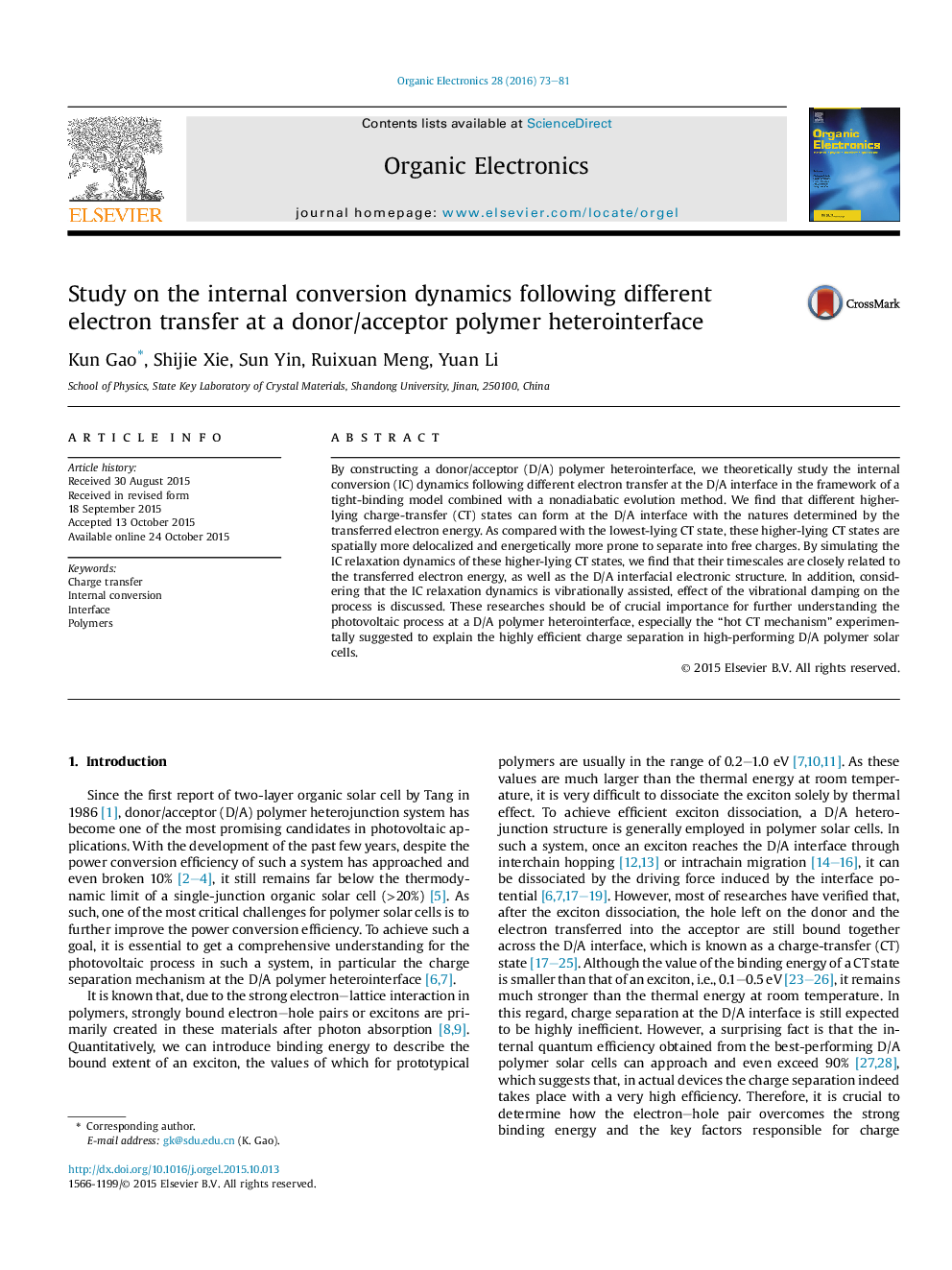| Article ID | Journal | Published Year | Pages | File Type |
|---|---|---|---|---|
| 1267116 | Organic Electronics | 2016 | 9 Pages |
•We theoretically construct a donor/acceptor (D/A) polymer heterointerface.•The static and dynamic natures following different electron transfer are focused.•Charge separation from higher-lying CT states is energetically favorable.•Factors affecting the internal conversion timescales of the CT states are discussed.
By constructing a donor/acceptor (D/A) polymer heterointerface, we theoretically study the internal conversion (IC) dynamics following different electron transfer at the D/A interface in the framework of a tight-binding model combined with a nonadiabatic evolution method. We find that different higher-lying charge-transfer (CT) states can form at the D/A interface with the natures determined by the transferred electron energy. As compared with the lowest-lying CT state, these higher-lying CT states are spatially more delocalized and energetically more prone to separate into free charges. By simulating the IC relaxation dynamics of these higher-lying CT states, we find that their timescales are closely related to the transferred electron energy, as well as the D/A interfacial electronic structure. In addition, considering that the IC relaxation dynamics is vibrationally assisted, effect of the vibrational damping on the process is discussed. These researches should be of crucial importance for further understanding the photovoltaic process at a D/A polymer heterointerface, especially the “hot CT mechanism” experimentally suggested to explain the highly efficient charge separation in high-performing D/A polymer solar cells.
Graphical abstractDifferent transferring pathways of the excited electron at a donor/acceptor (D/A) polymer heterointerface.Figure optionsDownload full-size imageDownload as PowerPoint slide
